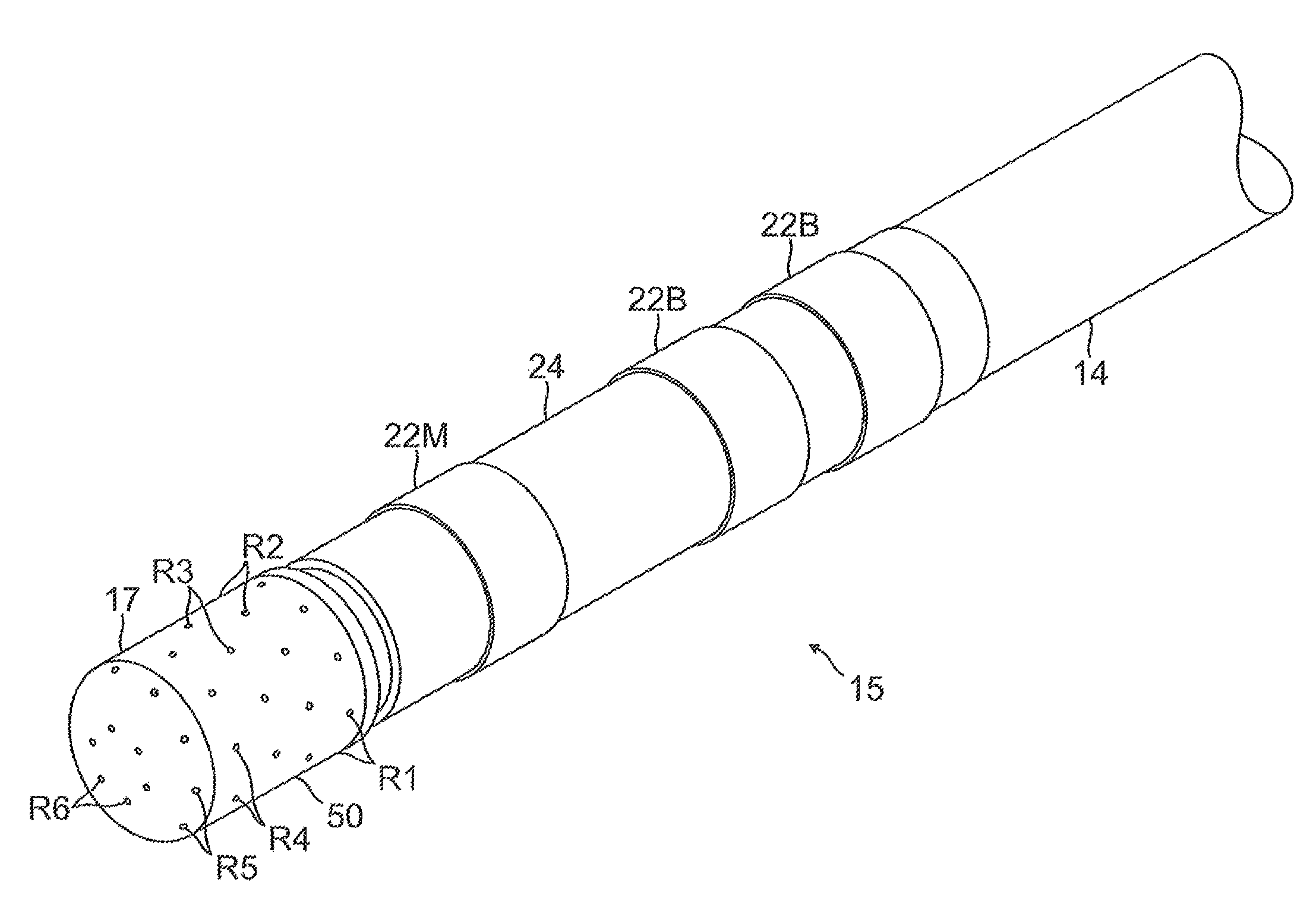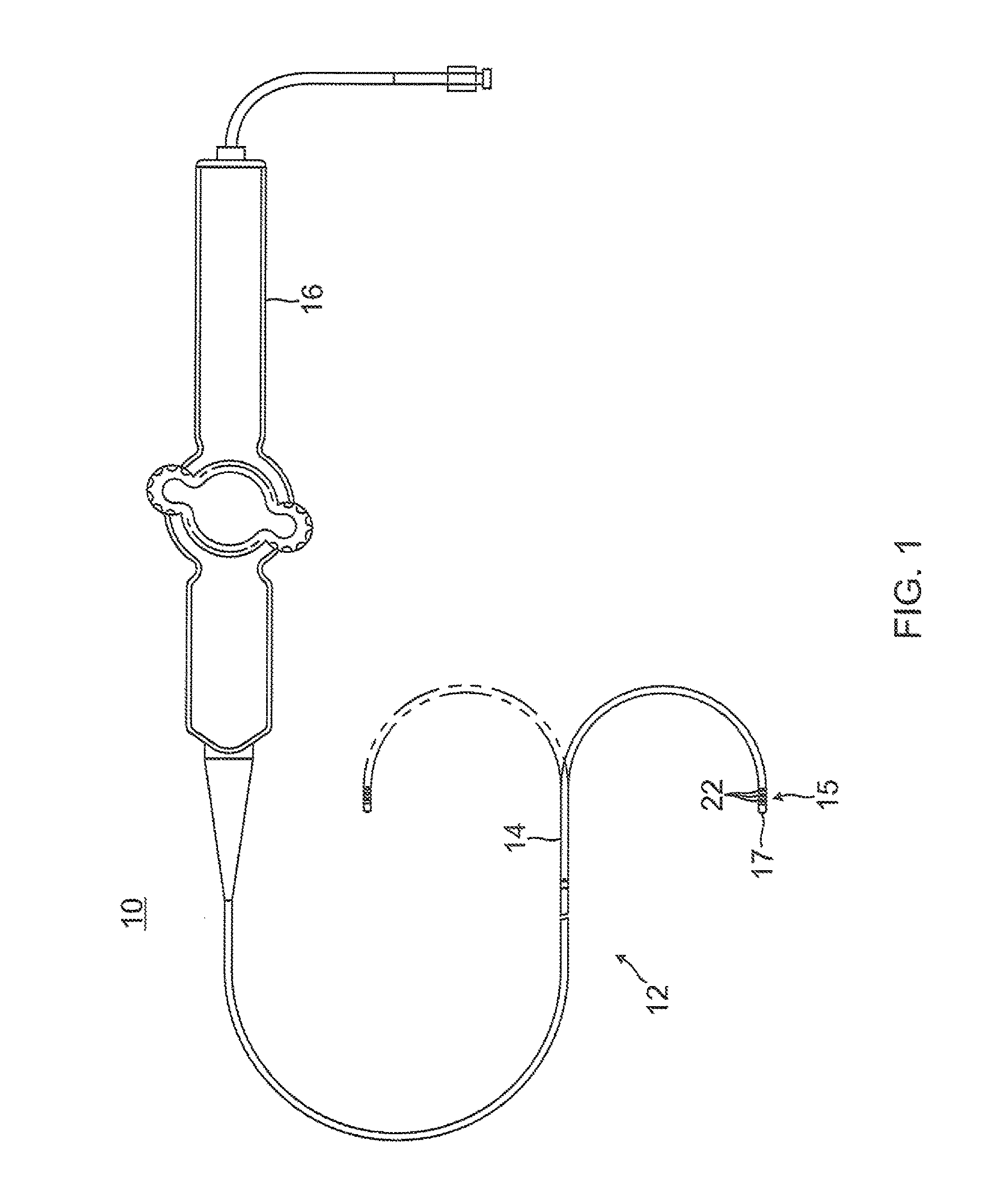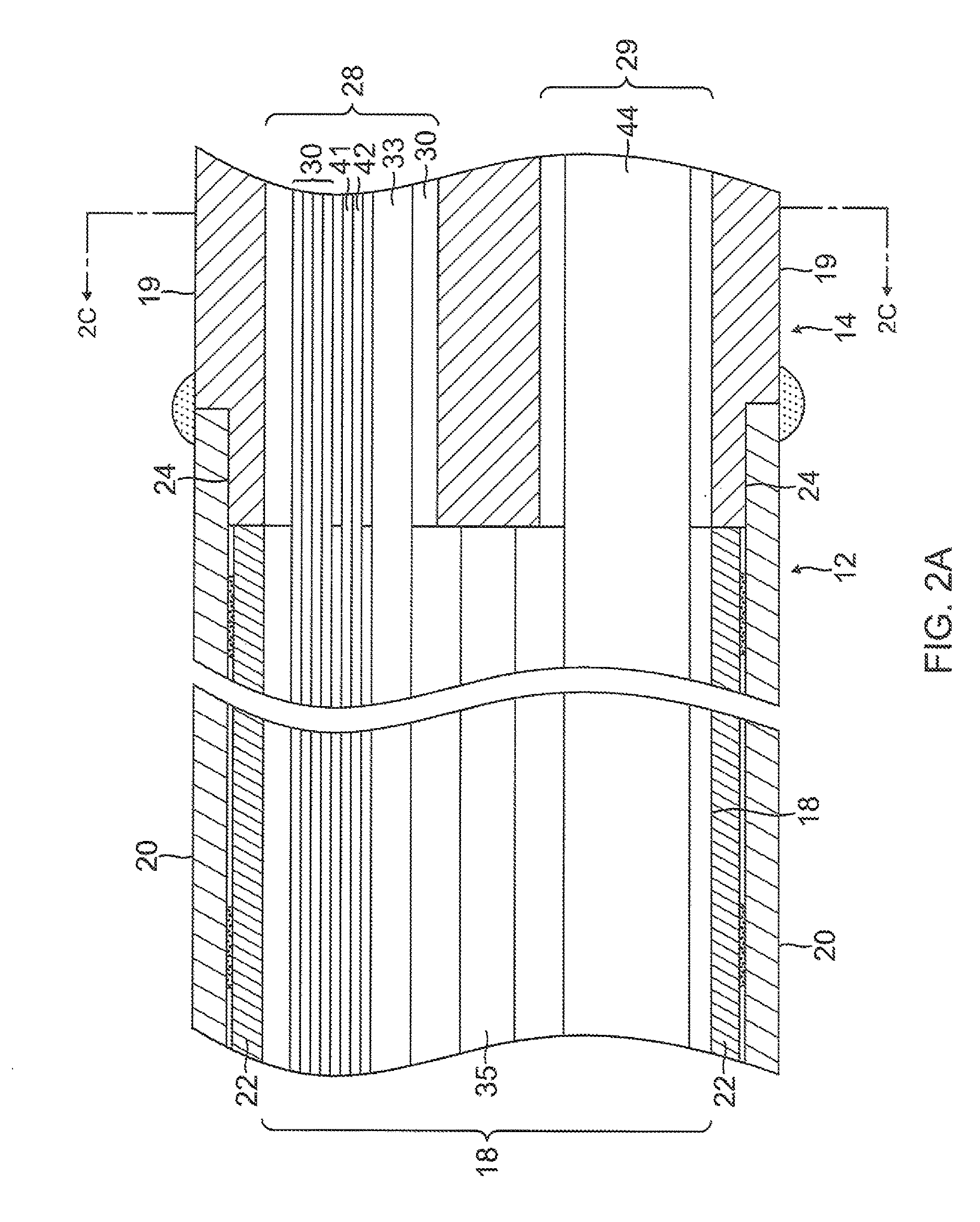Irrigated ablation catheter having irrigation ports with reduced hydraulic resistance
a technology of irrigated ablation catheter and hydraulic resistance, which is applied in the field of electrophysiologic catheter, can solve the problems of sudden death, life-threatening arrhythmia, cardiac arrhythmia, etc., and achieve the effects of improving the fluid flow of irrigation, increasing the fluid load on the patient, and increasing the velocity
- Summary
- Abstract
- Description
- Claims
- Application Information
AI Technical Summary
Benefits of technology
Problems solved by technology
Method used
Image
Examples
Embodiment Construction
[0060]FIG. 1 illustrates an embodiment of a catheter 10 with improved irrigation flow through a tip ablation electrode 17. The tip electrode is configured to promote fluid flow into the tip electrode and dispersion of fluid therein in providing more uniform fluid coverage and flow at all locations on the exterior of the tip electrode. The catheter is therefore operable at lower flow rates with lower fluid load on the patient while providing improved cooling of the tip electrode. Moreover, a high fluid exit velocity at the tip electrode provides a “jetting” action that aids in creating a fluid boundary layer around the tip electrode which reduces the occurrence rate of char and / or thrombus during ablation. Fluid, e.g., saline or heparinized saline, can be transported to the ablation site from the tip electrode to cool tissue, reduce coagulation and / or facilitate the formation of deeper lesions. It is understood that other fluids can be delivered, as well, including any diagnostic and...
PUM
 Login to View More
Login to View More Abstract
Description
Claims
Application Information
 Login to View More
Login to View More - R&D
- Intellectual Property
- Life Sciences
- Materials
- Tech Scout
- Unparalleled Data Quality
- Higher Quality Content
- 60% Fewer Hallucinations
Browse by: Latest US Patents, China's latest patents, Technical Efficacy Thesaurus, Application Domain, Technology Topic, Popular Technical Reports.
© 2025 PatSnap. All rights reserved.Legal|Privacy policy|Modern Slavery Act Transparency Statement|Sitemap|About US| Contact US: help@patsnap.com



